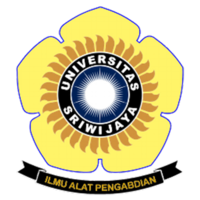Produksi Mie Protein Tinggi dari Terigu yang Difortifikasi Tepung Komposit dan Protein Kacang Hijau
Abstract
Consumption of noodles in Indonesia in 2018 ranks second in the world after China with consumption of 12.54 billion packs. The amount of consumption of instant noodles has caused an increase in the import of wheat because the main raw material for making noodles is wheat flour. In 2018 wheat imports are predicted to reach 11.8 million tons. To reduce the need for wheat there needs to be an alternative local raw material to replace it. This study aims to utilize cassava and corn flour as composite flour to make instant noodles, where Mung bean protein isolates (IPKH) and Na-alginate are used for binding and gelling agents. The study used an experimental method with factorial randomized block design (RBD). The first factor is mung bean protein isolates and the second factor is Na-alginate. Statistical analysis using variance analysis (Anova) followed by Tukey Test with α ≤ 5% if there is a difference. The results showed that the interaction of the use of 30% protein isolates combined with 0.2% Na-alginate to make instant noodles increased the protein content of noodles to 31.24%, water absorbtion during cooking ranged from 104.66%-157.33%, breaking power before cooking around 55.20 g/cm2-81.33 g/cm2. Taste, aroma and texture based on organoleptic tests rather like to like.
Keywords: instant noodles, Na-alginate, protein isolates
Full Text:
PDFReferences
Ahmad N.Sarfraz M. Farooq U. Mushtaq MZ. Ali MA. and Khan A. 2016. Quality evaluation of some mungbean [Vigna radiata (L.)Wilczek] varietas/promising lines from Punjab Pakistan. J. Agric. Res. 54(1) : 85-95.
Alfian B. dan Susanti R. 2012 Analisis Senyawa Fenolik, 43-65, Universitas Diponegoro Press. Semarang.
AOAC. 2005. Official Methods of Analysis. Washington: Association of Official Analytical Chemists.
Andarwulan N. Kusnandar F. dan Herawati D. 2011. Analisis Pangan. Jakarta: Dian Rakyat.
Chairani F. 2015. Konsumsi Mie Instan Masyarakat Indonesia. Kompasiana, https://www.kompasiana.com. Diakses 3 juli 2018.
Choy AL. Hughes JG. Small DM. 2010. The effects of microbial transglutaminase, sodium stearoyl lactylate and water on the quality of instant fried noodle. Food Chem 22:957–964.
Estiasih T. Harijono, Waziiroh E. dan Febrianto K. 2018. Kimia dan Fisik Pangan. Bumi Aksara. Jakarta.
Li W. Shu C. Yan S. and Shen Q. 2010. Characteristics of sixteen mung bean cultivars and their protein isolates. Int. J. Fd. Sci.Tech. 45 : 1205–1211
Gulia N. Dhaka V. Khatkar BS. 2014. Instant noodle: processing, quality, and nutritional aspects. Crit. Rev. Fd. Sci. Nutr. 54:1386–1399
Lindriati T. Setiawan I. Maryanto dan Tamtarini, 2007. Pengaruh penambahan isolat protein koro pedang (Canavalia Ensiformis) terhadap sifat fisik dan mekanik edible dari pati jagung. J. Agr. I (1): 47 -54.
Mulyadi AF. dan Wignyanto ANB. 2013. Pembuatan mie kering kemangi (Ocimum Sanctum L.) dengan bahan dasar tepung terigu dan tepung Mocaf (Modified Cassava Flour)(kajian jenis perlakuan dan konsentrasi kemangi), in: Proceeding seminar nasional “konsumsi pangan sehat dengan gizi seimbang menuju tubuh sehat bebas penyakit” FTPUGM.
Okezie BO. and Bello AB. 1988. Physicochemical and functional properties of winged bean flour and isolate compared with soy isolate. J. Fd.Sci. 53 (2) : 450-454.
Omeire GC. Umeji, OF and Obasi NE 2010. Acceptability of noodles produced from blends of wheat, acha and soybean composite flours. Nig. Fd. Jour. 32(1): 31-37.
Rosmeri I. Vinsensia dan Bella NM. 2013. Pemanfaatan Tepung Umbi Gadung (Dioscorea hispida Dennst) dan Tepung Mocaf (Modified Cassava Flour) sebagai Bahan Substitui dalam Pembuatan Mie Basah, Mie Kering, dan Mie Instan. Jur. Tekn. Kim.Ind. 2(2): 246-256.
Skylas DJ. Molloy MP. Willows RD. Blanchard CL and Quail KJ. 2017. Characterisation of Protein Isolates Prepared from Processed Mungbean (Vigna radiata) Flours. Jou. Agric. Sci. 9(12) : 1 - 10
Sukamto, Aulanni’am dan Sudiyono, 2009. Sifat fungsional produk interaksi fraksi globulin 7S komak (D. lablab) dengan gum xanthan. Jur. Tek. Ind. Pang. 20(2) : 119-125.
Utomo AP. Riyadi PH. Wijayanti I.2014. Aplikasi alginate sebagai emulsifier di dalam pembuatan kamaboko ikan kuniran (Upeneus sulphureus) pada penyimpanan suhu ruang. J. Peng. Biot.Has.Per. 3(1):127-136.
Szekalska MA. Puciłowska E. Szymańska P. Ciosek K. Winnicka. 2016. Alginate: Current Use and Future Perspectives in Pharmaceutical and Biomedical Applications [WWW Document]. Int. J. Polym. Sci. https://doi.org/10.1155/2016/7697031. Di akses 10 juli 2018.
Wicaksana FC. Agustin TW. Rianingsih L. 2014. Pengaruh penambahan bahan pengikat terhadap karakteristik fisik surimi ikan patin (Pangasius hyphyhalmus). J. Pengol. Biotek. 3(3) : 1 - 8
Article Metrics
Abstract view : 959 timesPDF - 842 times
Refbacks
- There are currently no refbacks.

